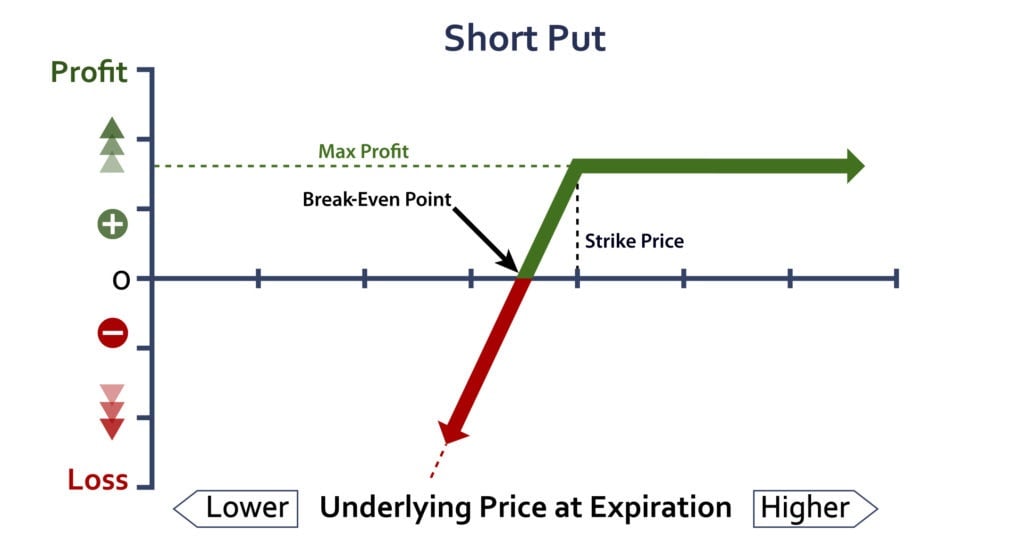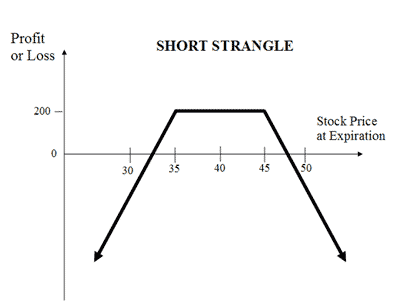 Zerodha (Trading & Demat Account)
Zerodha (Trading & Demat Account)
FREE Equity Delivery and MF
Flat ₹20/trade Intra-day/F&O
 Zerodha (Trading & Demat Account)
Zerodha (Trading & Demat Account)
FREE Equity Delivery and MF
Flat ₹20/trade Intra-day/F&O

|
|
Compare Short Put and Short Strangle (Sell Strangle) options trading strategies. Find similarities and differences between Short Put and Short Strangle (Sell Strangle) strategies. Find the best options trading strategy for your trading needs.
| Short Put | Short Strangle (Sell Strangle) | |
|---|---|---|
 |
 |
|
| About Strategy | A short put is another Bullish trading strategy wherein your view is that the price of an underlying will not move below a certain level. The strategy involves entering into a single position of selling a Put Option. It has low profit potential and is exposed to unlimited risk. A short put strategy involves selling a Put Option only. For example if you see that the shares of a Company A will not move below Rs 1000 then you sell the Put Option of that stock at Rs 1000 and receive the premium amount. The premium received will be the maximum profit you can earn from this trade. However, if the price of the underlying moves below 1000 then you will incur unlimited losses. | The Short Strangle (or Sell Strangle) is a neutral strategy wherein a Slightly OTM Call and a Slightly OTM Put Options are sold simultaneously of same underlying asset and expiry date. This strategy can be used when the trader expects that the underlying stock will experience a very little volatility in the near term. It is a limited profit and unlimited risk strategy. The maximum profit earn is the net premium received. The maximum loss is achieved when the underlying moves either significantly upwards or downwards at expiration. A net credit is taken to enter into this strategy. For this reason, the Short Strangles are Credit Spreads. The usual Short Strangle Strategy looks like as below for NIFTY current index value at 10400 (NIFTY S... Read More |
| Market View | Bullish | Neutral |
| Strategy Level | Beginners | Advance |
| Options Type | Put | Call + Put |
| Number of Positions | 1 | 2 |
| Risk Profile | Unlimited | Unlimited |
| Reward Profile | Limited | Limited |
| Breakeven Point | Strike Price - Premium | two break-even points |
| Short Put | Short Strangle (Sell Strangle) | |
|---|---|---|
| When to use? | Short Put works well when you're Bullish that the price of the underlying will not fall beyond a certain level. |
The Short Strangle is perfect in a neutral market scenario when the underlying is expected to be less volatile. |
| Market View | Bullish When you are expecting the price or volatility of the underlying to increase marginally. |
Neutral When you are expecting little volatility and movement in the price of the underlying. |
| Action |
A short put strategy involves selling a Put Option only. So if you see that the shares of a Company A will not move below a 1000 then you sell the Put Option of that stock at 1000 and receive the premium amount. The premium received will be the maximum profit you can earn from this deal. However, if the price of the underlying moves below 1000 than you will incur losses. |
Sell 1 out-of-the-money put and sell 1 out-of-the-money call which belongs to same underlying asset and has the same expiry date. |
| Breakeven Point | Strike Price - Premium |
two break-even points A strangle has two break-even points. Lower Break-even = Strike Price of Put - Net Premium Upper Break-even = Strike Price of Call+ Net Premium" |
| Short Put | Short Strangle (Sell Strangle) | |
|---|---|---|
| Risks | Unlimited There is no limit to losses incurred in the trade. The risk is when the price of the underlying falls, and the Put is exercised. You are then obliged to buy the underlying at the strike price. |
Unlimited The maximum loss is unlimited in this strategy. You will incur losses when the price of the underlying moves significantly either upwards or downwards at expiration. Loss = Price of Underlying - Strike Price of Short Call - Net Premium Received Or Loss = Strike Price of Short Put - Price of Underlying - Net Premium Received |
| Rewards | Limited The profit is limited to premium received in your account when you sell the Put Option. |
Limited For maximum profit, the price of the underlying on expiration date must trade between the strike prices of the options. The maximum profit is limited to the net premium received while selling the Options. Maximum Profit = Net Premium Received |
| Maximum Profit Scenario | Underlying doesn't go down and options remain exercised. |
Both Option not exercised |
| Maximum Loss Scenario | Underlying goes down and options remain exercised. |
One Option exercised |
| Short Put | Short Strangle (Sell Strangle) | |
|---|---|---|
| Advantages | It allows you benefit from time decay. And earn income in a rising or range bound market scenario. |
The strategy offers higher chance of profitability in comparison to Short Straddle due to selling of OTM Options. |
| Disadvantage | It is a high risk strategy and may cause huge losses if the price of the underlying falls steeply. |
Limited reward with high risk exposure. |
| Simillar Strategies | Bull Put Spread, Covered Call, Short Straddle |
Short Straddle, Long Strangle |

Add a public comment...

FREE Intraday Trading (Eq, F&O)
Flat ₹20 Per Trade in F&O
|
|